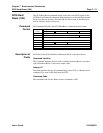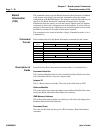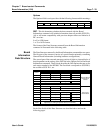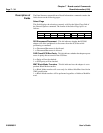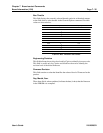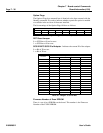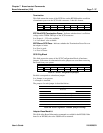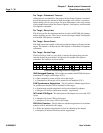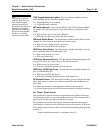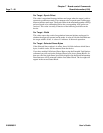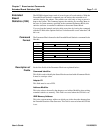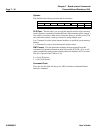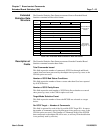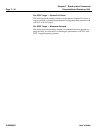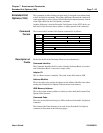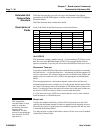
User’s Guide 21020285 D
Chapter 7 Board-control Commands
Board Information (15H) Page 7 - 39
Note
The setting of this bit
indicates only that you
have enabled tagged
queuing operation for
this target using the Unit
Options (or Extended
Unit Options) command.
It does not indicate that
the device is actually
operating in that mode.
TQE Tagged Queuing Enabled - This bit indicates whether you have
enabled tagged queuing operation with this target.
0 ⇒ Tagged Queuing is not enabled.
1 ⇒ Tagged Queuing is enabled.
INT Issue Interrupt - Used with the ISB bit, the INT bit indicates whether
the adapter will post an interrupt for retry Status Block(s) returned for this
target.
0 ⇒ Will not interrupt for retry Status Block(s).
1 ⇒ Will interrupt when retry Status Block(s) returned.
ISB Issue Status Block - This bit indicates whether a Status Block will be
returned for each command retry performed on this target.
0 ⇒ Will not issue a Status block for each retry.
1 ⇒ Will issue a Status Block for each retry.
RPE Retry Parity Errors - This bit indicates whether the adapter will retry
SCSI commands that failed with a parity error.
0 ⇒ Will not retry for parity errors.
1 ⇒ Will retry parity errors.
RCE Retry Command Errors - This bit indicates whether the adapter will
respond to a device error with a retry of the failed command.
0 ⇒ Will not retry for device errors.
1 ⇒ Will retry commands that error from the device.
RBE Retry (SCSI) Bus Errors - This bit indicates whether the adapter will
retry a command that fails.
0 ⇒ Will not retry SCSI Bus Errors.
1 ⇒ Will retry commands that failed due to SCSI Bus Errors.
SS Selected Sense - This bit indicates whether you are using the Selected
Sense byte option to return up to 16 bytes of specially ordered and selected
Sense data.
0 ⇒ Sense data defaults to first eight bytes returned from the device.
1 ⇒ Selected Sense option in effect; Sense data returned according to selection.
Per Target - Synch Period
The Synchronous Transfer Period is negotiated between initiator and target
when the target is able to operate in synchronous mode. The common value is
agreed upon via Messages between initiator and target.
The Synchronous Transfer Period is the minimum time allowed between
leading edges of each successive REQ pulse and each successive ACK pulse.
The transfer period (in nanoseconds) is calculated by multiplying the negotiated
value by 4:
Transfer period(nanoseconds) = negotiated value X 4



